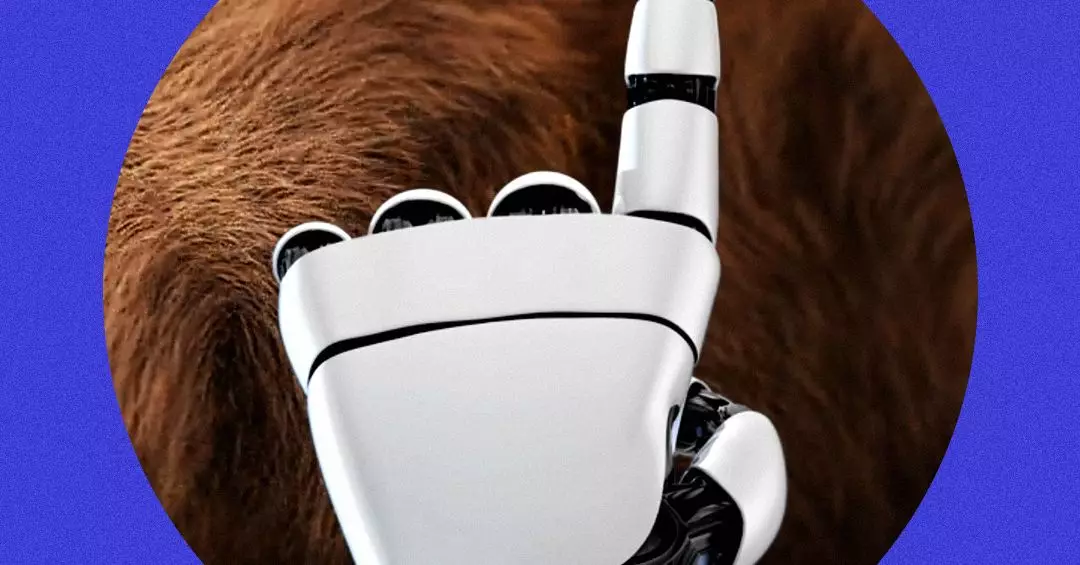The landscape of warehouse operations is on the brink of transformation thanks to Amazon’s latest innovation, a warehouse robot named Vulcan. Unlike its predecessors, Vulcan harnesses the power of touch to navigate the complex task of item retrieval, blurring the lines between human dexterity and robotic precision. This development hits at a fundamental gap in automation technology, where machines traditionally struggle with tasks requiring fine motor skills and tactile sensitivity. As Amazon gears up to enhance productivity and efficiency within its fulfillment centers, Vulcan stands as a testament to the company’s belief in multi-sensory robots.
Revolutionizing Item Retrieval
The Vulcan robot is equipped with a specially designed appendage reminiscent of a spatula, which allows it to gently poke and prod at items on the shelves. This innovative design showcases a significant upgrade in robotic technology by integrating physical manipulation capabilities that mimic human-like actions. The brilliance of Vulcan’s system lies in its sensors located on various joints, which allow it to recognize the shapes and contours of objects—an intricacy that has eluded robots for years. Through a combination of groundbreaking machine learning algorithms and tactile feedback, Vulcan can intelligently assess which item to prioritize, thus optimizing the retrieval process.
According to Aaron Parness, one of the leading figures behind Vulcan’s development, the robot’s ability to interact with various objects provides a solution to one of the most labor-intensive challenges in warehousing—the need to efficiently stow and retrieve items among a diverse array of products. This interaction doesn’t just make Vulcan competitive; it sets a new standard for what robotic systems can achieve in terms of versatility and precision.
Humans and Robots: A Symbiotic Relationship
In its operational debut at fulfillment centers in Hamburg and Spokane, Vulcan collaborates with human workers rather than replacing them. By taking on the physically demanding task of retrieving items from higher or lower shelves, Vulcan alleviates the strenuous burden on warehouse employees, thereby improving ergonomics and overall workplace safety. In a bold move towards enhancing human working conditions, Amazon has recognized the importance of maintaining a partnership between flesh and metal, aiming for a seamless integration of both forces within its operational framework.
As highlighted by Ken Goldberg, a prominent roboticist, the complexities of touch sensing remain one of the final frontiers in robotic innovation. While significant strides have been made in the field, achieving human-like tactile abilities is still a daunting challenge. Vulcan, though revolutionary, represents a stepping stone rather than a concluding chapter in the story of robotic tactile capability. The pursuit of advancements in this arena will likely determine how effectively robots can fill roles traditionally held by humans.
The Future of Automation at Amazon
Despite the excitement surrounding Vulcan, Parness emphasizes a critical perspective: the belief in complete automation is misguided. Amazon has not set out to replace its workforce entirely but rather aims to enhance its operational capacity through innovative technology. This calculated approach affirms Amazon’s commitment to utilizing robotic advancements to complement human labor, ensuring that automation serves as a tool for empowerment rather than a source of job displacement.
The potential ramifications of Vulcan extend beyond Amazon’s immediate fulfillment centers. Frequently, the idea of automation evokes concerns about job security and the diminishing role of human workers in the economy. However, with Vulcan’s introduction, there is a robust case for reshaping the narrative surrounding automation. The goal becomes not just about reducing costs or increasing efficiency but also about recognizing the unique capabilities that humans bring to the table, which robots, even advanced ones like Vulcan, cannot replicate.
A Pioneering Step in Robotic Evolution
Vulcan represents a pivotal moment in the evolution of robotics, promising a future where sensory perception becomes an integral facet of machine operation. As companies navigate the complexities inherent in modern-day logistics and warehousing, the incorporation of robots like Vulcan into everyday workflows demonstrates a groundbreaking shift toward a more efficient and flexible operational model. With its unique focus on tactile interaction, Amazon is not only pushing forward the boundaries of technology, but it is also setting a new precedent for the collaborative relationship between humans and robots in the workforce.


Leave a Reply